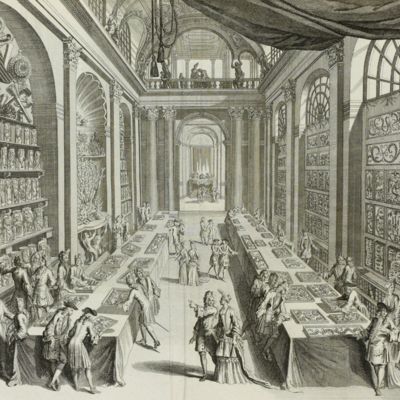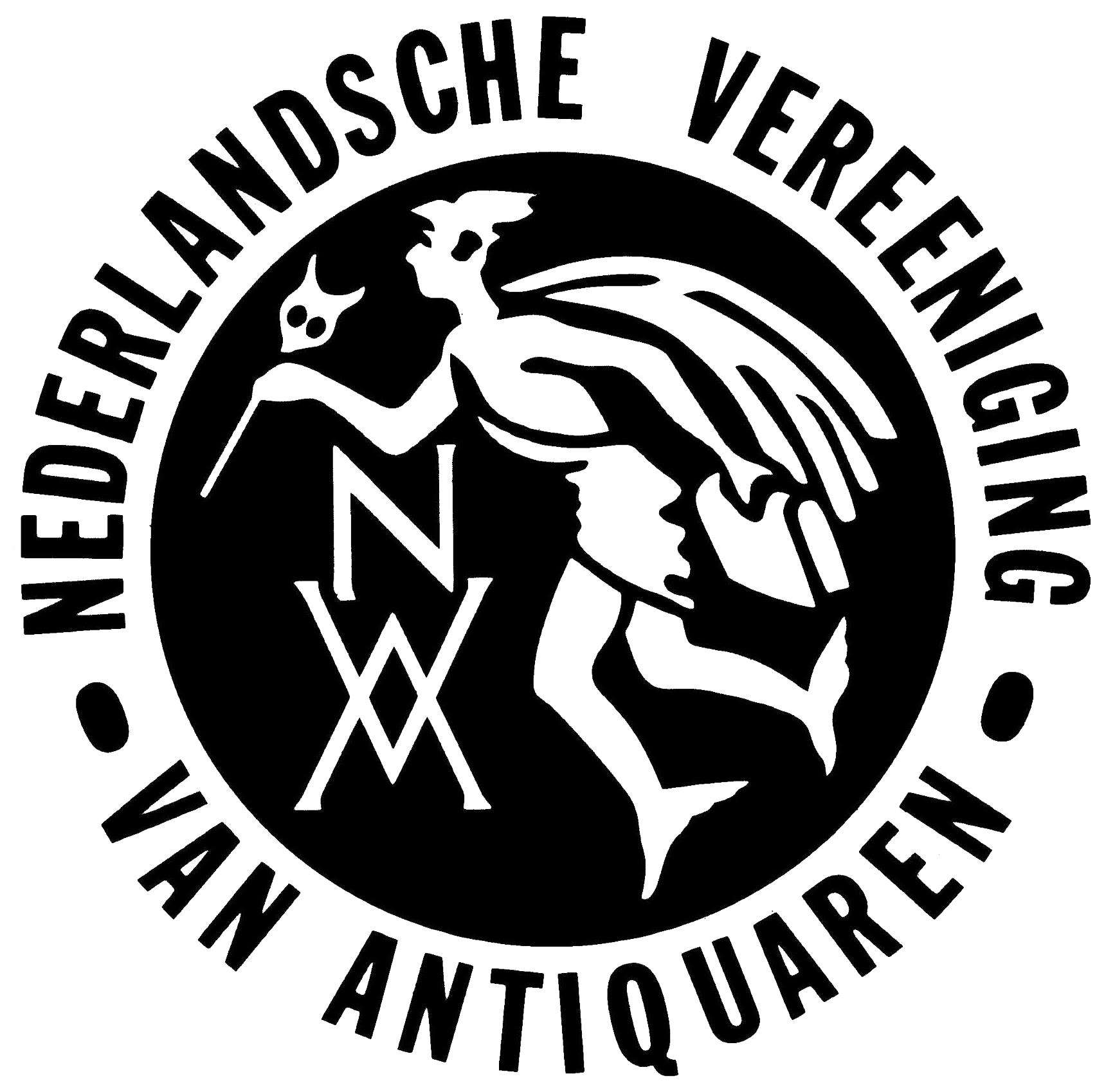Vincent, L.
Elenchus tabularum, pinacothecarum, atque nonnullorum cimeliorum in gazophylacio = Description abregée des planches, qui représentent les cabinets & quelques-unes des curiosités, contenuës dans le théatre des merveilles de la nature.
Harlem [Haarlem], aux dépens de l'auteur, 1719. 4to (25.1 x 20.3 cm). Two title-pages (Latin and French), engraved frontispiece by Jan van Viane[n] after Romeijn de Hooghe; [22]-52 pp., each with a title-vignette; one unnumbered folded plate by A. van Buijsen, and seven numbered folded plates representing the different closets of the collection. 20th-century blind vellum.
A finely illustrated catalogue of one of the most beautiful cabinets of curiosities, compiled over 40 years of collecting by the rich Dutch designer and merchant of luxurious textiles, Livinus Vincent (1658-1727). He collected both naturalia (shells, insects, corals, birds, lizards, and small mammals) and artificialia (works, such as art or antiques, modified by humans). Vincent had one of the foremost Wunderkammern in Holland, visited by among others Tsar Peter the Great and King Charles III of Spain. "Vincent and his wife, Joanna van Breda, took a lot of effort to present their collectables in a pleasurable and instructive spectacle. They ordered their shells and insects in elegant designs that resembled magnificent pieces of embroidery" (Wikipedia). He "considered it his task to create an order in the collection. He classified and catalogued insects, butterflies, and shells, among other things. His collection could be visited. The entry price was two guilders in 1726: a substantial sum. Vincent saw nature as a reflection of God's omnipotence and, according to his own words, his collection had people turned to God because they were impressed by His ability" (website of the Stadsarchief Gemeente Amsterdam). "After the death of his second wife in 1715, he remarried a woman who did not like his collection or hobby. Vincent moved to The Hague, hoping to find a buyer for his cabinet among the town's many diplomats. He corresponded with such friends as James Petiver and Hans Sloane in England." (Wikipedia). The plates had been published earlier, in 1706 as Wondertooneel der Nature, which translates as: Wonder Show of Nature. A very good, clean copy. Cat. BM(NH) Suppl., p. 1371; Fearrington, F. (2012) Rooms of Wonder, 96; Nissen ZBI, 4254.




